Ute people
|
Chief Severo and family, ca. 1899 | |
| Total population | |
|---|---|
| (4,800[1]–10,000[2]) | |
| Regions with significant populations | |
|
| |
| Languages | |
| English, Ute[1] | |
| Religion | |
| Native American Church, traditional tribal religion, and Christianity | |
| Related ethnic groups | |
| Chemehuevi and Southern Paiute people[1] |
Ute people /ˈjuːt/ are Native Americans of the Ute tribe and culture. They are now living primarily in Utah and Colorado. The Ute are in the Great Basin classification of Indigenous People.
They have three Ute tribal reservations: Uintah-Ouray in northeastern Utah (3,500 members); Southern Ute in Colorado (1,500 members); and Ute Mountain which primarily lies in Colorado, but extends to Utah and New Mexico (2,000 members). The majority of Ute are believed to live on one of these reservations. The State of Utah is named after these people.
Language and culture
The primary language of the Ute people is English. However, some of the people still speak their ancestral Ute language. It is related to the Southern Paiute language and belongs to the Southern subdivision of the Numic branch of the Uto-Aztecan language family.
A dictionary and grammar have been written for the language, and the Bible has been translated into Ute. Several orthographies exist, but the language is written in the Latin script. Different ideas about the phonetic spelling of many names and some words has caused confusion about the spelling, so many names are often spelled in several different ways. An example is Timpanogos, which has also been spelled as Toompahnahwach, Tumpanuwac, Tumpanawach, Timpanog, Tumpipanogo or Timanogos, among other spellings. (Some of these spellings are transliterations by other language speakers to represent how Ute words sounded in their languages.)
The original homeland of the Uto-Aztecan languages is generally considered to have existed several thousand years ago along the border between the United States and Mexico, perhaps in the area of Arizona and New Mexico, as well as part of the Northern Mexican states of Chihuahua and Sonora. From this area, speakers of Uto-Aztecan languages gradually diffused northward and southward. Tribes that speak Uto-Aztecan languages include the Aztec in Central/South Mexico; Hopi and Pima in Arizona and New Mexico; and tribes such as the Ute, Paiute, Bannock, Shoshone, and Comanche on the north and east.
The Ute, Paiute, Shoshone, Comanche and some others belong to what is called the Numic subdivision within the Uto-Aztecan language family. It is believed that this Numic group originated near the border of Nevada and California, then spread North and East.[3] The Numic group is divided into 3 main subdivisions - Southern, Central and Western. Not all of the languages are mutually intelligible, especially those in different subdivisions. Ute and Southern Paiute are Southern Numic Languages, while Shoshone, Gosiute and Comanche are Central Numic, and Northern Paiute and Bannock are Western Numic. Some ethnologists postulate that the Southern Numic speakers left the Numic homeland first, based on language changes, and that the Central and then the Western subgroups spread out toward the east and north, sometime later.[4]
The Numic-speaking tribes share many cultural, genetic and linguistic characteristics. Many of the tribes met and merged with each other or divided from each other at various times. For instance, the Comanche split off from the Shoshone in about the mid-1600s. Since the mid-1800s, some Ute bands merged with Southern Paiute bands to become Paiute. Some possibly Shoshonean tribes, such as the Timpanogos, merged with the Ute. It is also true that there were many times when the tribes did not get along. The name "Comanche" is from the Ute name for them, kɨmantsi (meaning enemy).[5]
History

Before Mexican settlers arrived, the Utes occupied significant portions of what are today eastern Utah, western Colorado,[6] including the San Luis Valley, and parts of New Mexico and Wyoming. The Utes were never a unified group within historic times; instead, they consisted of numerous nomadic bands that maintained close associations with other neighboring groups. Some of the largest known groups were the Capote, Moache, Moanumts, Parianuche, Taviwach, Weeminuche, and Yamperika. Also the Uintah or Uinta, Uncompahgre tribe and White River Utes.
Unlike many other tribal groups in this region, the Utes have no tradition or evidence of historic migration to the areas now known as Colorado and Utah—and ancestors of the Ute appear to have occupied this area or nearby areas for at least a thousand years. The last partial migration of the Utes within this area was in the year 1885, as the tribes were coalescing on the reservations.
Treaties between the United States and the Utes
Following acquisition of Ute territory from Mexico by the Treaty of Guadalupe-Hidalgo the United States made a series of treaties with the Ute:
- 1849 treaty of peace
- 1863 treaty relinquishing the San Luis Valley
- 1865 treaty of the Uintah Reservation. “In 1861, President Abraham Lincoln signed an executive order establishing the original Uintah Valley Reservation in the eastern part of the Utah territory. . . Congress ratified the order in 1864. . . A council of the Ute people was called at Spanish Fork Reservation on 6 June 1865. The aged leader Chief Sowiette (a brother of Chief Walkara, who had died 10 years before) explained that the Ute people did not want to sell their land and go away, asking why the groups couldn't live on the land together. Chief Sanpitch (another brother of Walkara) also spoke against the treaty. However, advised by Brigham Young that these were the best terms they could get, the leaders signed. The treaty provided that the Utes give up their lands in central Utah, including the Corn Creek, Spanish Fork, and San Pete Reservations. Only the Uintah Valley Reservation remained. They were to move into it within one year, and be paid $25,000 a year for ten years, $20,000 for the next twenty years, and $15,000 for the last thirty years. (This was payment of about 62.5 cents per acre for all land in Utah and Sanpete Counties.) However, Congress did not ratify the treaty; therefore, the government did not pay the promised annuity. Nevertheless, in succeeding years most of the Utah Ute people were removed to the Uintah Reservation.” Though many historians refer to Sowiette and San-Pitch and their people as Utes, at the time of this treaty, they were the Utah Indians or Timpanogos, and may have been a Shoshonean people who only became Utes after they moved to the Uintah Reservation and joined other Utes there.[7]
- Treaty with The Ute March 2, 1868 by which the Ute retained all of Colorado Territory west of longitude 107° west and relinquished all of Colorado Territory east of longitude 107° west.[8]
- Treaty with the Capote, Muache, and Weeminuche Bands establishing the Southern Ute Reservation and the Mountain Ute Reservation.[9]
Enemies and Warrior Culture
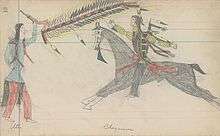
Like other Plains Indian tribes the Utes were skilled warriors who specialized in horse mounted combat. War with neighboring tribes was mostly fought for gaining prestige, stealing horses, and revenge. Prior to a raid warriors would organize themselves into war parties made up of warriors, medicine men, and a war chief which led the party. To prepare themselves for battle Ute warriors would often fast, participate in sweat lodge ceremonies, and paint their faces and horses for special symbolic meanings. The Utes were master horsemen and could execute daring maneuvers on horseback while in battle. Unlike other plains people the Ute did not have warrior societies with the exception of the Southern Utes which developed them late and were dissolved after they went onto reservations. Warriors were exclusively men but women often followed behind war parties to help gather loot and sing songs. Women also performed the Lame Dance to symbolize having to pull or carry heavy loads of loot after a raid.[10] The Utes used a variety of weapons including lances, bows, tomahawks, war clubs, and knives, as well as rifles, shotguns, and pistols which were obtained through raiding or trading.
The enemies of the Ute included the Cheyenne, Crow, Shoshone, Blackfoot, and Arapaho to the north of Ute territory. East and southeast of Ute territory they fought with the Sioux, Pawnee, Osage, Kiowa, Comanche, and Plains Apache. To the west and south they encountered Navajo, Paiute, and Western Shoshone. The Utes traded with various Puebloan peoples such as the Taos and were close allies with the Jicarilla who shared much of the same territory.
Contact with Spanish explorers
The Utes' first contact with Europeans was with early Spanish explorers in the 1630s. They adopted the horse, obtaining mounts through trading with the Spanish colonists in New Mexico or theft from those settlements. As a result of the new mobility, Ute culture changed dramatically in ways that paralleled the Plains Indian cultures of the Great Plains. The social upheaval resulted in various degrees of consolidation, political realignment and tension between the various Ute groups. The Utes were for the most part enemies of the Spanish and the conquered Pueblo towns. They engaged in a long series of wars, in some cases three-sided, with the Navajo, various other Apache tribes, and the Comanche, especially in the plains of eastern Colorado and northeastern New Mexico.
Contact with other European settlers
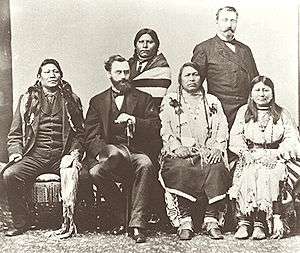
The Ute experience with European-American settlers is similar to that of many other Native American groups: competition, confrontation and eventual coerced relocation to reservations. Of particular interest are the Walker War (1853–54) and Black Hawk War (1865–72) in Utah.
Over the years, friction between recently arrived white settlers and goldseekers in Utah and Colorado and local Ute groups resulted in several skirmishes and incidents. In the same period, the Ute sometimes allied with the United States in its wars with the Navajo, for example in 1863, and with the Apache.
A series of treaties established a small reservation in 1864 in northeast Utah, and a reservation in 1868, which included the western third of modern Colorado. The latter included land claimed by other tribes. Their lands were whittled away until only the modern reservations were left: a large cession of land in 1873 transferred the gold-rich San Juan area, which was followed in 1879 by the loss of most of the remaining land after the "Meeker Massacre".[11]
Eventually, the various bands of Utes were consolidated onto three reservations. Several of these bands maintain separate identities as part of the Ute tribal organizations. Although initially large and located in areas that white settlers deemed undesirable (occupying parts of Utah and most of western Colorado), the territory of the reservations was repeatedly reduced by various government actions, and encroachment by white settlers and mining interests. In the 20th century, several U.S. federal court decisions restored portions of the original reservation land to the Ute Tribes' jurisdiction and awarded monetary compensations for losses.
Northern Ute culture
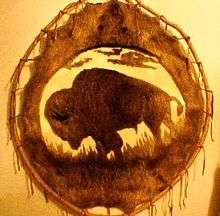
The Northern Utes, consisting of the Whiteriver, Uintah, and Uncompahgre bands, are exceptional artists and produced religious and ceremonial beadwork, unusual art forms, and designed and decorated weapons of war in their traditional culture. The Ute obtained glass beads and other trade items from early trading contact with Europeans and rapidly incorporated their use into religious, ceremonial, and warfare objects.
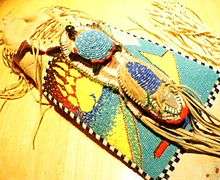
Like their southern neighbors, the Diné (Navajo), in the 21st century a large percentage of Northern Ute are members of the Native American Church. They participate in sacred ceremonies that use peyote, a small spineless cactus. Traditional Ute healers use peyote to treat infections, and a variety of other plants, including Elk Root, Bear Root (Ligusticum porteri), and tobacco sage. The Ute have integrated peyote religion into their culture; its artistic and expressive influences pervade their art and rich cultural and ceremonial objects. There is evidence the Ute have used peyote obtained through trade and other potent ceremonial plants used as entheogens since ancient times. Examples include the dried leaves of Larb (a species of Manzanita), tobacco sage collected from the Escalante area (a mild hallucinogen when smoked), and the potent and narcotic White Uinta water lily. Tobacco sage was also brewed into a tea with Elk Root and the root of the Yellow Uinta water lily, and used to treat tumors and cancer. (While the root of the Yellow Uinta water lily is toxic in large amounts, small amounts can be used to strengthen the heart muscle in people with heart ailments.).
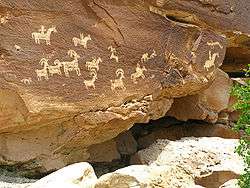
Ute religious beliefs borrowed much from the Plains Indians after the arrival of the horse. The Northern and Uncompahgre Ute were the only group of Indians known to create ceremonial pipes out of salmon alabaster, as well as a rare black pipestone found only in the creeks that border the southeastern slopes of the Uinta Mountains in Utah and Colorado. Although Ute pipe styles are unique, they resemble the styles of their eastern neighbors from the Great Plains. The black pipestone is also used to make lethal war clubs, which warriors used to great effect from the back of a horse. The Ute have a religious aversion to handling thunderwood (wood from a tree struck by lightning) and believe that the thunder beings would strike down any Ute Indian that touched or handled such wood. This is also a Diné (Navajo) belief. There is extensive evidence that contact between the two groups existed since ancient times.
Each spring the Ute (Northern and Southern) hold their traditional Bear Dances. Origin of the Bear Dance can be traced back several centuries. Each year, a mid-summer fasting and purification ceremony known as the Sun Dance is held; this ceremony has important spiritual significance to the Ute.
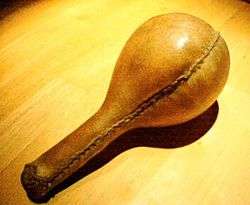
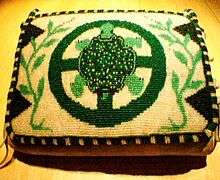
The Uncompahgre Ute Indians from central Colorado are one of the first documented groups of people in the world known to use the effect of mechanoluminescence. They used quartz crystals to generate light, likely hundreds of years before the modern world recognized the phenomenon. The Ute constructed special ceremonial rattles made from buffalo rawhide, which they filled with clear quartz crystals collected from the mountains of Colorado and Utah. When the rattles were shaken at night during ceremonies, the friction and mechanical stress of the quartz crystals banging together produced flashes of light which partly shone through the translucent buffalo hide. These rattles were believed to call spirits into Ute ceremonies, and were considered extremely powerful religious objects.
Historic Ute bands
The Ute were divided into several larger and smaller bands, which today mostly are organized as the Northern Ute Tribe, Southern Ute Tribe and Ute Mountain Ute Tribe:
Northern Ute Tribe (Uinta Utes)
- Yapudttka (Yampadttka, Yamparka, Yamparika, lived in the Yampa River Valley and the adjacent regions, known today as White River Utes or Yamparika Utes)
- Pahdteeahnooch (Pahdteechnooch, Parianuc, Parianuche, later called Uncompahgre, lived along the Grand River in Colorado and Utah, known today as Grand River Utes or Parianuche Utes)
- Taveewach (Taviwach, Taviwac, Tabeguache, later called Uncompahgre, lived in river valleys of the Gunnison River and Uncompahgre River, as well in the Elk Mountains west toward the City of Grand Junction, known today as Taviwach Utes)
- Muhgruhtahveeach (include all Northern Utes, who lived in Utah, known today as Utah Utes or Unita)
- Cumumba (also called Weber Utes) - Lived along the Weber River, intermarried with the Western Shoshone.[12] The Western Shoshone in that area were well known and often discussed in reports by the Commissioners of Indian Affairs. “The tribes and fragments of tribes with whom I had business relations . . . are as follows, to wit: . . .On the 10th of December . . . Little Soldier, chief, and Benjamin Simons, sub-chief, of a band of Sho-sho-nes, with some of their principal men, called on me . . . The territory claimed by them includes Salt lake, Bear river, Weber river and Cache valley . . .[13] They are known today as Cumumba Utes
- Timpanogos (Tumpanuwac, Tumpanawach, Toompahnahwach - ‘Fish-eaters’ - because Utah Lake was a pristine, notable fresh water fishery at the time - also called Tumpipanogo or Timanogot,[14] In Spanish called Lagunas - ‘Lake People’ and Come Pescados - ‘Fish-eaters.’ They are known today as Timpanogos Utes). They formerly lived in the Wasatch Range around Mount Timpanogos, along the southern and eastern shores of Utah Lake of the Utah Valley, and in Heber Valley, Uinta Basin and Sanpete Valley. They also utilized the river canyons of the Spanish Fork, Diamond Fork, Hobble Creek, American Fork and Provo River. They most commonly are listed historically as the group encountered by the Dominguez and Escalante Expedition while in Central Utah, and later, it was known as the tribe under famed Chief Walkar or Walkara before moving to the Uintah Reservation to join with the Utes. Based on some names and words they used, it is not completely clear whether they were culturally a Southern Numic people, along with the rest of the Utes, or whether they might originally have been Central Numic, and possibly a Shoshonean group. The Shoshone, Utes and Paiutes did share a common genetic, cultural and linguistic heritage as part of the Numic branch of the Uto-Aztecan language family, and they often joined, separated or mixed together at various times.
- Sahpeech (Sanpeech, Sanpits, San-pitch lived in the Sanpete Valley and Sevier River Valley and along the San Pitch River. Today known as San Pitch Utes) They also might originally have been Shoshonean, and were generally considered as part of the Timpanog tribe, before joining the Utes on the Uintah Reservation. Often called the Utahs or Utah Indian Tribe in reports by early Indian Affairs Commissioners. “The tribes and fragments of tribes with whom I had business relations... are as follows, to wit: on the second day of December last I was visited by San-Pitch, a principal chief of the Utahs, and a few of his men..."[13] Famous Chiefs included Chief Aropeen and Chief Sanpitch, for whom Sanpete County, Utah is named.
- Pahvant - Lived west of the Wasatch Range in the Pavant Range towards the Nevada border along the Sevier River in the desert around Sevier Lake and Fish Lake, therefore they called themselves Pahvant - ‘living near the water’. In their way of living they resembled their neighbors, the Kaibab Paiute, and intermarried just like the Sahyehpeech with neighboring Goshute and Paiute. Known in the past as Pahvant Utes, they are today absorbed into the Paiute Indian Tribe of Utah.[15][16] This is the tribe that was noted as the "Bearded Indians" who were contacted by the Dominguez and Escalante Expedition.
- Yoowetum (Yoovwetuh, Uinta-at, later called Tavaputs, lived in the Uintah Basin, Uinta Mountains, including the Utah Lake and Great Salt Lake, along the Strawberry River in the west and the Tavaputs Plateau in the Green River-Colorado River-system in the east, known today as Uinta-Ats Utes)
- Sahyehpeech (Sheberetch, lived in the vicinity of today Moab, had almost no direct contact with Europeans until 1850 Mormons penetrated into their territory, about 1870 by war and disease decimated Sahyehpeech joined other Ute bands, known today as Sheberetch Utes)
- Moanunts (Moanumts, lived in the Upper Sevier River Valley in central Utah, in the Otter Creek region south of Salina and in the vicinity of Fish Lake, today absorbed into the Paiute Indian Tribe of Utah)
Southern Ute Tribe
- Capote Band of Utes (Kapota, Kahpota) lived east of the Great Divide south of the Conejos River and east of the Rio Grande towards the west site of the Sangre de Cristo Mountains, they were also living in the San Luis Valley, along the headwaters of the Rio Grande and along the Animas River, centered in the vicinity of today Chama and Tierra Amarilla of Rio Arriba County. Like the Mahgrahch the Kahpota maintained trade relations to Puebloan peoples and came into conflict with southern plains people because of their alliance with the Ollero band of the Jicarilla Apache.[15]
- Muache Band of Utes (Mouache, Mahgruhch, Mahgrahch, Muwac) lived along the eastern foothills of the Rocky Mountains from Denver, Colorado in the north to Las Vegas, New Mexico in the south, traded with northern Puebloan peoples, especially with Taos Pueblo, therefore often called Taos-Ute, ranged after adoption of the horse with their allies, the Llanero band of the Jicarilla Apache, southeastward as far as the Texas Panhandle.
Ute Mountain Ute Tribe
- The Weminuche Band of Utes ("Weeminuche", Weemeenooch, Wiminuc, Guiguinuches) lived west of the Great Divide along the Dolores River of western Colorado, in the Abajo Mountains, in the Valley of the San Juan River and its northern tributaries and in the San Juan Mountains including the mesas and plateaus of eastern Utah.
Contemporary times
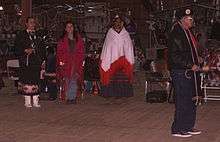
Present-day Utes occupy a small fraction of their former territories.
Northern Ute Tribe
The largest tribes are the Northern Ute, which live on the Uintah and Ouray Reservation in northeastern Utah. It is the largest of several groups of Ute and Shoshone Indians that were relocated to the Northern Ute Indian Reservation during the late 19th and early 20th century, including the Northern Shoshone, Uintah, Uncompahgre, White River, and Southern Ute.
Some believe that the Northern Ute disfranchised the other Ute groups when they reorganized during the mid-20th century and gained control of the Uintah and Ouray Indian Reservation as a result. The people of the U & O reservation are well aware of their own ancestries. Lawsuits and litigation have been commonplace between mixed-blood Utes and the Northern Ute Tribe for rights to tribal enrollment and privileges. As a part of the federal Indian termination policy the US government partitioned the tribe in 1954 automatically classifying any tribal member with 1/2 or less blood quantum as a mixed-blood.[17] With the repudiation of the termination policy in 1970,[18] mixed-bloods hoped for restoration to the tribe. Since 2002, they have been seeking civil action to repeal the Ute Partition Act.[19] Mixed-blood Utes with a lower percentage of Ute ancestry have accused the tribe of disfranchisement in terms of rights to tribal lands and equal legal treatment.
Some affiliates, descendants of certain Northern Ute families who in earlier years decided against enrollment and federal recognition of their native ancestry, live on the reservation land holdings owned by particular families since the Federal government forced relocation in 1881. The Affiliate Utes have recently applied for federal recognition and are involved in litigation with the United States and the Northern Ute tribe. The Affiliates should not be confused with other mixed-blood Utes, which families did not choose to be unrecognized. Some Utes of partial descent are enrolled as Northern Utes, but are also active members of the Affiliates.
Northern Utes can be found all over the world. They have learned to adapt to various societies. A northern Ute is also called Nuchu. Various bands have more complex names and each name has a meaning. Over the years the Northern Ute language has changed extensively with the combinations of different dialects and English language influences.
The Northern Ute Tribe began repurchasing former tribal lands following the Indian Reorganization Act of 1934. They gained return of the 726,000-acre (2,940 km2) Hill Creek Extension by the federal government in 1948. More recent court decisions of the 1980s have granted the Northern Utes "legal jurisdiction" over three million acres (12,000 km²) of alienated reservation lands. Discoveries of oil and gas on Ute land in Utah hold the promise of increased living standards for tribal members.
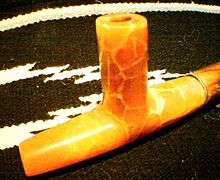
In 1965, the Northern Tribe agreed to allow the US Bureau of Reclamation to divert a portion of its water from the Uinta Basin (part of the Colorado River Basin) to the Great Basin. The diversion would provide water supply for the Bonneville Unit of the Central Utah Project. In exchange, the Bureau of Reclamation agreed to plan and construct the Unitah, Upalco, and Ute Indian Units of the Central Utah Project to provide storage of the tribe's water. By 1992, the Bureau of Reclamation had made little or no progress on construction of these facilities. To compensate the Tribe for the Bureau of Reclamation's failure to meet its 1965 construction obligations, Title V of the Central Utah Project Completion Act contained the Ute Indian Rights Settlement. Under the settlement, the Northern Tribe received $49.0 million for agricultural development, $28.5 million for recreation and fish and wildlife enhancement, and $195 million for economic development.
Southern Ute Tribe
The Southern Ute Indian Reservation is located in southwestern Colorado, with its capital at Ignacio. The area around the Southern Ute Indian reservation are the hills of Bayfield and Ignacio, Colorado.
The Southern Ute are the wealthiest of the tribes and claim financial assets approaching $2 billion.[20] Gambling, tourism, oil & gas, and real estate leases, plus various off-reservation financial and business investments, have contributed to their success. The tribe owns the Red Cedar Gathering Company, which owns and operates natural gas pipelines in and near the reservation.[21] The tribe also owns the Red Willow Production Company, which began as a natural gas production company on the reservation. It has expanded to explore for and produce oil and natural gas in Colorado, New Mexico, and Texas. Red Willow has offices in Ignacio, Colorado and Houston, Texas.[22] The Sky Ute Casino and its associated entertainment and tourist facilities, together with tribally operated Lake Capote, draw tourists. It hosts the Four Corners Motorcycle Rally[23] each year. The Ute operate KSUT,[24] the major public radio station serving southwestern Colorado and the Four Corners.
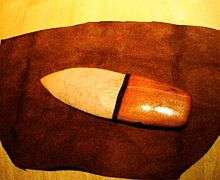
Ute Mountain Tribe
The Ute Mountain Ute are descendants of the Weminuche band, who moved to the western end of the Southern Ute Reservation in 1897. (They were led by Chief Ignacio, for whom the eastern capital is named). The Ute Mountain Ute Tribe Reservation is located near Towaoc, Colorado. It includes small sections of Utah and New Mexico. The Ute Mountain Tribal Park abuts Mesa Verde National Park and includes many Ancestral Pueblan ruins. The White Mesa Community of Utah (near Blanding) is part of the Ute Mountain Ute Tribe but is largely autonomous.
Modern challenges
Gradual assimilation into majority culture has presented both challenges and opportunities for the Utes. The current conditions of the Utes are similar to those of many Native Americans living on reservations. Cultural differences between the Utes and the rest of America have contributed to pockets of poverty, educational difficulties and societal marginalization, although the Southern Ute Tribe is financially successful.
Ethnobotany
The Ute use the roots and flowers of Abronia fragrans for stomach and bowel troubles.[25]
In popular culture
When the Legends Die (1963), a book by Hal Borland, is a story about a Ute boy growing up on a reservation after his parents die, and becoming a rodeo sensation. A film adaptation by the same name was released in 1972.
The state of Utah was named after the tribe. The University of Utah's athletic teams are known as the Utes and received explicit permission from the tribe to do so.[26]
Notable Utes
- Chief Walkara, also called Chief Walker. Most prominent Chief in the Utah area when the Mormon Pioneers arrived. Leader during the Walker War.
- Sanpitch Chief of the Sanpete tribe. A brother of Chief Walkara. Sanpete County is named for him.
- Black Hawk Son of Chief San-Pitch. Noted War leader during the Utah Black Hawk War (1865–72).
- Chief Ouray, leader of the Uncompahgre band of the Ute tribe
- Chipeta, Ouray's wife and Ute delegate to negotiations with federal government
- R. Carlos Nakai, Native American flutist
- Joseph Rael, (b. 1935), dancer, author, and spiritualist
- Raoul Trujillo, dancer, choreographer, and actor
- Polk, Ute-Paiute chief
- Posey, Ute-Paiute chief
See also
- List of Indian reservations in the United States
- Indian Campaign Medal
- Ute Indian Museum
- Ute mythology
- Utah
References
- 1 2 3 4 "Ute-Southern Paiute." Ethnologue. Retrieved 27 Feb 2014.
- ↑ American Indian, Alaska Native Tables from the Statistical Abstract of the United States: 2004–2005, US Census Bureau, USA.
- ↑ Catherine Louise Sweeney Fowler. 1972. "Comparative Numic Ethnobiology". University of Pittsburgh PhD dissertation.
- ↑ David Leedom Shaul. 2014. A Prehistory of Western North America, The Impact of Uto-Aztecan Languages. Albuquerque: University of New Mexico Press.
- ↑ Bright, William, ed. (2004). Native American Placenames of the United States. University of Oklahoma Press. Missing or empty
|title=(help) - ↑ "Colorado Indian Tribes and Languages". native-languages.org.
- ↑ "Treaty of the Uintah Reservation 6 June 1855".
- ↑ "Treaty with The Ute March 2, 1868". Washington, D.C. March 2, 1868. Retrieved July 4, 2011.
- ↑ "Agreement with the Capote, Muache, and Weeminuche Utes" (PDF). Pagosa Springs, Colorado. November 8, 1878. Retrieved July 4, 2011.
- ↑ Simmons, Virginia McConnell. Ute Indians of Utah, Colorado, and New Mexico. Norman: University of Oklahoma Press.
- ↑ (PDF) https://web.archive.org/web/20110720102912/http://www.uintahbasin.usu.edu/johnbarton/files/chipeta.pdf. Archived from the original (PDF) on July 20, 2011. Retrieved April 14, 2011. Missing or empty
|title=(help) - ↑ It is discussed whether they were originally a Shoshone group, which later followed the Ute
- 1 2 Forney, Jacob (September 6, 1858), Annual Report of the Commissioner of Indian Affairs, UTAH SUPERINTENDENCY, September 6, 1858, by Jacob Forney, Superintendent of Indian Affairs,W.T., pp. 209–213
- ↑ derived from tumpi - 'rock' and panogos - 'water mouth' or 'Canyon'.
- 1 2 "Chapter Five - The Northern Utes of Utah". utah.gov.
- ↑ "Ute Memories". utefans.net.
- ↑ http://www.bia.gov/cs/groups/public/documents/text/idc016125.pdf
- ↑ "Richard Nixon: Special Message to the Congress on Indian Affairs.". ucsb.edu.
- ↑ http://www.narf.org/nill/bulletins/cta/documents/felter.pdf/
- ↑ GF Private Equity Group, LLC, Southern Ute Indian Tribe , USA.
- ↑ Red Cedar Gathering Company website, accessed 12 April 2009.
- ↑ Red Willow Production Company website, accessed 12 April 2009,
- ↑ "Four Corners Motorcycle Rally – Labor Day Weekend – Ignacio Colorado". fourcornersmotorcyclerally.com.
- ↑ KSUT.
- ↑ Chamberlin, Ralph V. 1909 Some Plant Names of the Ute Indians. American Anthropologist 11:27-40 (p. 32)
- ↑ Stephen Speckman. "U. Officially Files Appeal on Utes Nickname". Deseret News. Retrieved 2009-05-20.
Further reading
- McPherson, Robert S. (2011) As If the Land Owned Us: An Ethnohistory of the White Mesa Utes. ISBN 978-1-60781-145-9.
- Silbernagel, Robert. (2011) Troubled Trails: The Meeker Affair and the Expulsion of Utes from Colorado. ISBN 978-1-60781-129-9.
External links
| Wikimedia Commons has media related to Ute. |
| Wikisource has the text of the 1879 American Cyclopædia article Utahs. |
- Ute Tribe of the Uintah and Ouray Agency (Northern Ute Tribe)
- Southern Ute Indian Tribe
- Ute Mountain Ute Tribe
- Ute Tribe Education Department
- Ute article, Encyclopedia of North American Indians
- Removing Classrooms from the Battlefield: Liberty, Paternalism, and the Redemptive Promise of Educational Choice, 2008 BYU Law Review 377 The Utes and Richard Henry Pratt
- Four Corners Motorcycle Rally
- White River/Meeker Massacre
- Utah History to Go
